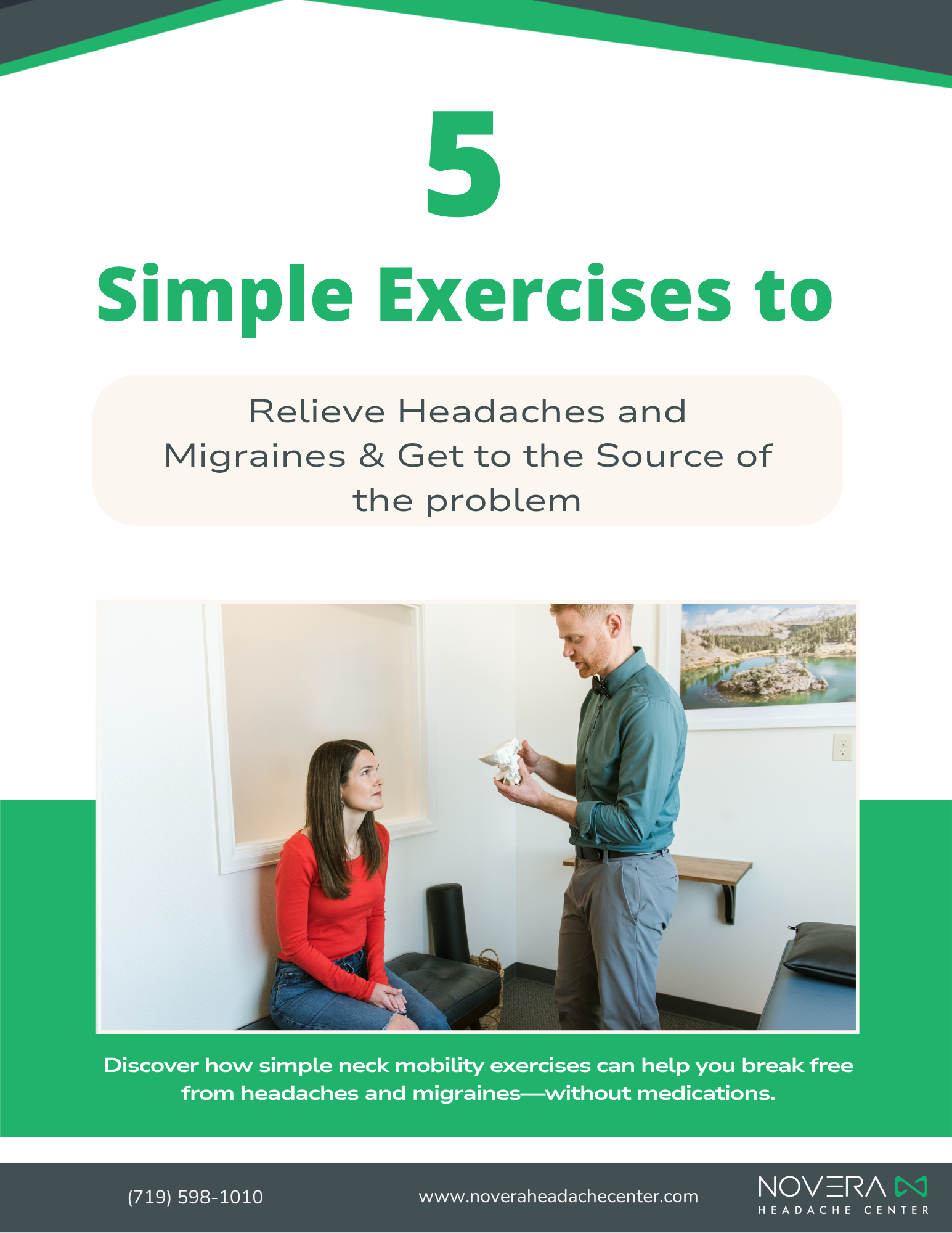If you’ve ever woken up with jaw tension, morning headaches, or felt like your dental night guard is just managing—not solving—your pain, you’re not alone. At Novera: Headache Center, we often see patients whose migraines are rooted in an overlooked connection between the jaw, neck, and airway.
Dr. Taves explains that many people with headaches also have jaw symptoms like clenching, grinding, or pain when chewing. “We rarely find one without the other,” he says. Understanding this relationship is key to lasting relief.
Why Does Jaw Pain Happen?
When most people report jaw discomfort or popping, the first advice they often hear is to “relax more” or “reduce stress.” While stress can play a role, Dr. Taves emphasizes that it’s rarely the root cause.
“I’ve never met someone who chooses stress,” he explains. “People don’t just decide to be stressed and suddenly develop jaw tension.”
Instead, two underlying physical issues are usually at play:
- Airway obstruction
- Neck misalignment and tension
1. How Airway Obstruction Impacts the Jaw
The jaw and airway are deeply connected. Ideally, we breathe through our nose—warming the air, producing nitric oxide, and keeping our body in a relaxed “rest and digest” state.
When nasal breathing becomes difficult due to a narrow airway, allergies, or developmental issues (like a tongue tie or underdeveloped palate), the body compensates by breathing through the mouth.
This shift can trigger a domino effect:
- The mouth stays open during sleep
- The tongue falls back into the airway
- The jaw thrusts forward to keep breathing clear
Over time, this creates strain on the jaw joints, leading to soreness, popping, and tension. Dr. Taves notes that people often wake up feeling like they “got hit by a truck,” with jaw pain, fatigue, and headaches—all signs of an underlying airway issue.
People Also Ask:
Can mouth breathing cause headaches?
Yes. Mouth breathing can alter jaw position, reduce oxygen efficiency, and increase neck tension—all of which can contribute to headache and migraine symptoms.
Simple at-home aids like Breathe Right® strips, xylitol nasal sprays, or gentle mouth taping can help retrain nasal breathing. But if you can’t breathe comfortably through your nose for five minutes, consult an ENT or airway specialist to identify the obstruction.
2. How the Neck Affects the Jaw
The second major contributor is neck tension and head posture. Many people naturally develop a slight head tilt—often to the right—due to habits like sitting unevenly, driving one-handed, or leaning on one hip.
This subtle imbalance shifts how the jaw rests and moves.
“Over time, that right-sided head tilt pulls the jaw to the right,” explains Dr. Taves. “You’re basically asking your jaw to work in a misaligned position every time you chew or talk.”
This constant strain on the jaw muscles and joints creates the perfect environment for clenching and grinding—especially during sleep. The muscles simply forget how to relax.
Why Night Guards Aren’t the Full Solution
While night guards can reduce tooth wear, they don’t solve the underlying jaw or neck dysfunction. “A night guard is like a crutch,” Dr. Taves explains. “It can protect your teeth, but it doesn’t address why you’re clenching in the first place.”
Real relief comes from treating the root causes—improving airway function, correcting posture, and restoring movement in the neck and jaw. That’s why Novera’s Three Spoke Framework focuses on:
- Treating the source of symptoms
- Addressing physical barriers
- Building long-term resilience through better movement and health
What You Can Do Right Now
- Breathe through your nose: retrain your body to close your mouth while resting or sleeping.
- Use nasal support: try Breathe Right® strips or xylitol sprays.
- Check your posture: avoid leaning or crossing legs to one side.
- Stay active: light neck mobility exercises can reduce asymmetry.
When to Seek Help
If you wake up with jaw tightness, clenching, or headaches, it’s time for a deeper look. You may have been told it’s “just stress” or been prescribed a night guard, but lasting change comes from understanding how your jaw, neck, and airway work together.
At Novera: Headache Center, we specialize in identifying and treating these underlying causes through movement-based physical therapy—without medication or surgery.
Quick Summary
Jaw pain and airway obstruction often go hand in hand with headaches and migraines. By addressing nasal breathing, neck posture, and movement, you can reduce tension, improve sleep, and finally find relief from chronic pain.




